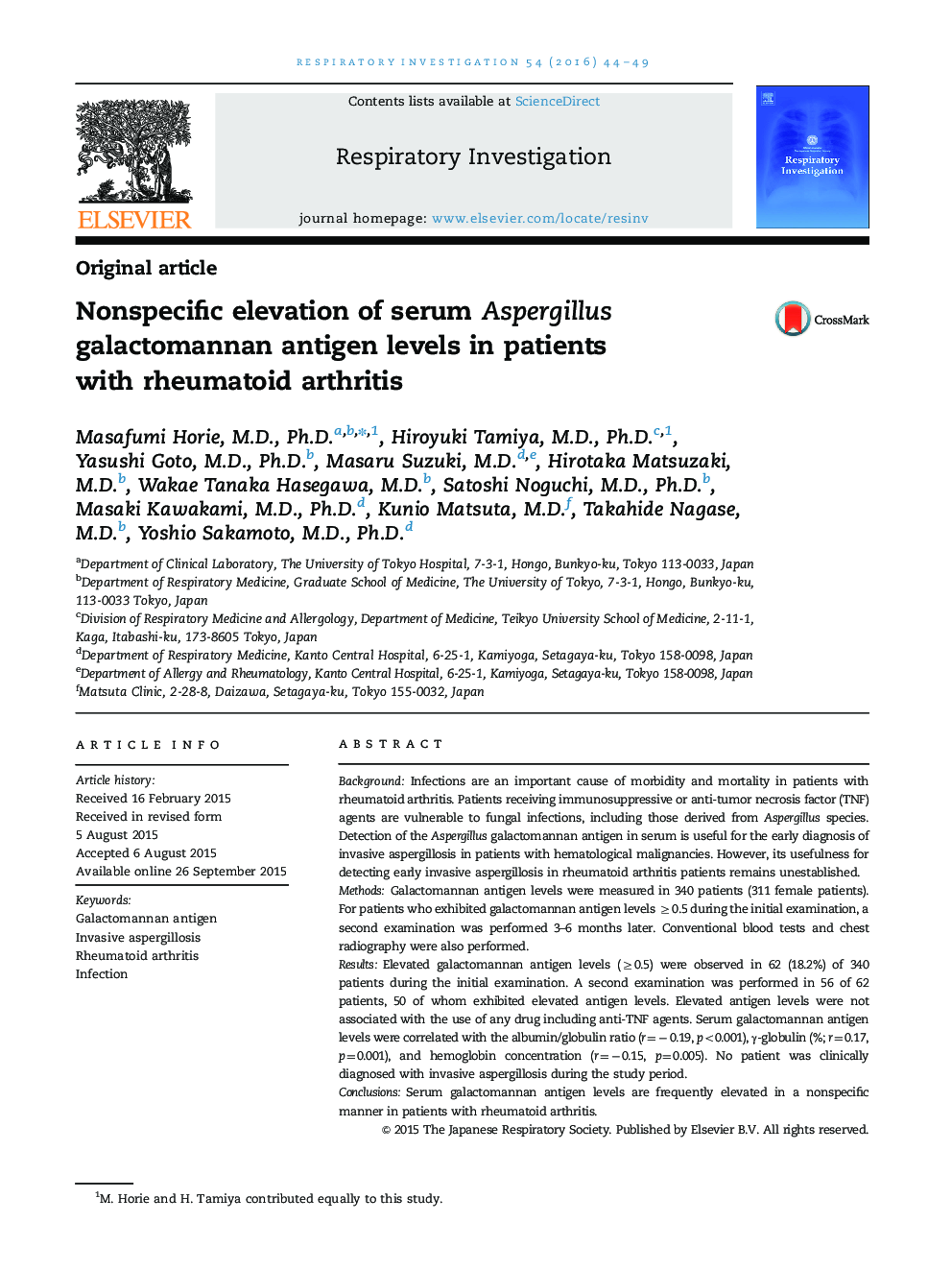| Article ID | Journal | Published Year | Pages | File Type |
|---|---|---|---|---|
| 3418628 | Respiratory Investigation | 2016 | 6 Pages |
BackgroundInfections are an important cause of morbidity and mortality in patients with rheumatoid arthritis. Patients receiving immunosuppressive or anti-tumor necrosis factor (TNF) agents are vulnerable to fungal infections, including those derived from Aspergillus species. Detection of the Aspergillus galactomannan antigen in serum is useful for the early diagnosis of invasive aspergillosis in patients with hematological malignancies. However, its usefulness for detecting early invasive aspergillosis in rheumatoid arthritis patients remains unestablished.MethodsGalactomannan antigen levels were measured in 340 patients (311 female patients). For patients who exhibited galactomannan antigen levels ≥0.5 during the initial examination, a second examination was performed 3–6 months later. Conventional blood tests and chest radiography were also performed.ResultsElevated galactomannan antigen levels (≥0.5) were observed in 62 (18.2%) of 340 patients during the initial examination. A second examination was performed in 56 of 62 patients, 50 of whom exhibited elevated antigen levels. Elevated antigen levels were not associated with the use of any drug including anti-TNF agents. Serum galactomannan antigen levels were correlated with the albumin/globulin ratio (r=−0.19, p<0.001), γ-globulin (%; r=0.17, p=0.001), and hemoglobin concentration (r=−0.15, p=0.005). No patient was clinically diagnosed with invasive aspergillosis during the study period.ConclusionsSerum galactomannan antigen levels are frequently elevated in a nonspecific manner in patients with rheumatoid arthritis.
